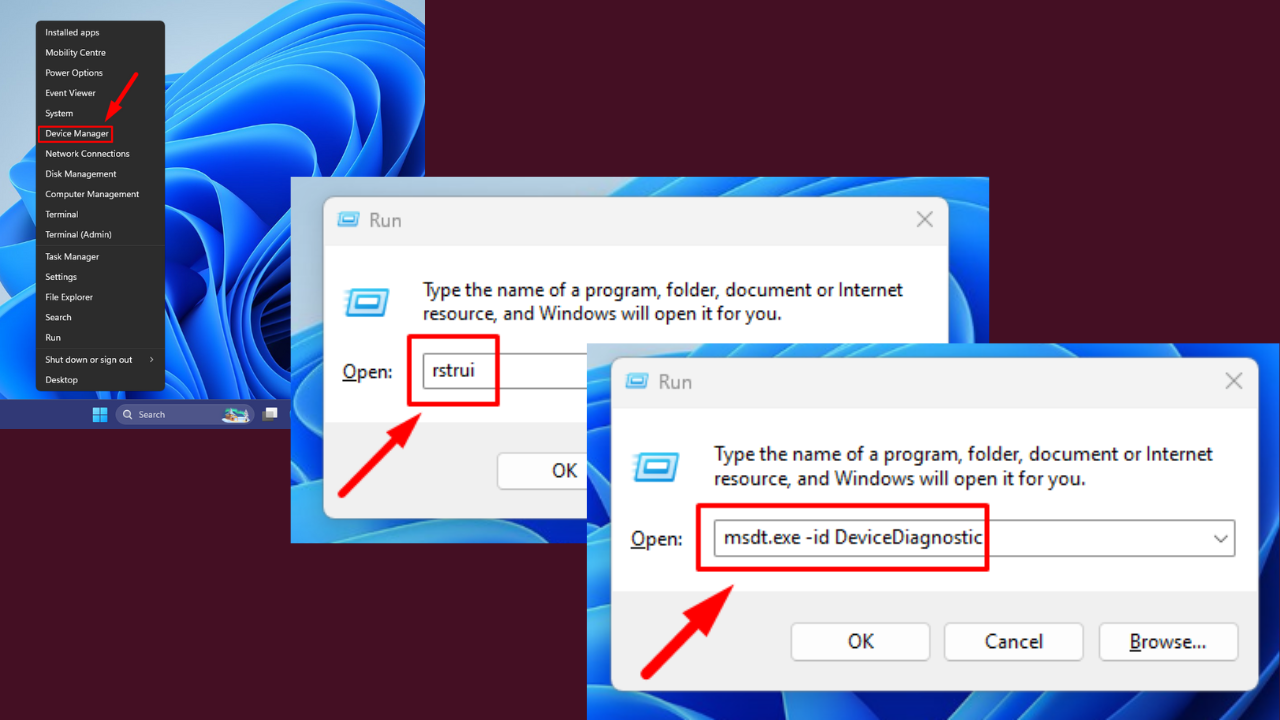Mango and Messaging - We Have a Problem
9 min. read
Published on
Read our disclosure page to find out how can you help MSPoweruser sustain the editorial team Read more
Windows Phone 7 Mango has broken to several members of the press today and each review has been positive. However, one problem I see is that I am not completely sold on one idea that I initially thought I was totally on board with. The article is in response to Eldar Murtazin and mobile-review’s response to Joe Belfiore’s comments about the iMessage system and how iMessage ripped a lot of ideas from Microsofts hot hands. Hit up the link to see the possible solutions and problems I see in Mango messaging that may need to be changed.
So perusing through twitter yesterday morning and the first thing I see is a tweet from mobile-review about an SMS problem in Mango where the comments seem truly interesting. I won’t bore everyone with the details, but the crux of the article can be summed in various points taken from the article itself. Specifically:
I felt a bit offended by the fact that Microsoft consider iMessage a copy of the messenger we see in Windows Phone 7 Mango. They do have something in common but I don’t think they can be called identical.
Spillikins #123. Modern Mobile IM clients – Microsoft’s approach vs. Apple’s
In Windows Phone 7 Mango the user has finally become the center of communication – it does not matter what app you use you will receive messages from any IM application like Facebook Chat or SMS and all your messaging will be displayed as a chat.
Spillikins #123. Modern Mobile IM clients – Microsoft’s approach vs. Apple’s
But what is the main difference between these services and SMS? The difference is that the delivery of an SMS is granted by the carrier and you can always get a message status report. While message delivery in modern IM clients is NOT guaranteed – we can only hope it gets through. This is a huge difference that allows me to say that the messaging concept used in Microsoft Windows Phone 7 has so far one but a considerable flaw – it puts together guaranteed message delivery services (SMS) with probable services.
Spillikins #123. Modern Mobile IM clients – Microsoft’s approach vs. Apple’s
To be frank for a moment, I began to pull my hair as I thought about the arguments here – because SMS and other services are combined and users have no idea whether the message is sent or not, the fundamental difference between the two lies in a notification. I know Eldar has been shady about his opinions in the past, but this is stupid of an argument. And then, I honestly began to think about the article critically. And I have concluded that while Eldar makes a very interesting point, he totally misses the mark. The focus on notification system could be one of the minor problems in the integrated scheme Microsoft has proposed. And after a while, I found some more issues that should’ve been addressed immediately. Ultimately, I hope the considerations are to be taken seriously and implemented before users get Mango. Or at the very least Apollo. Let’s begin.
Remember way back when Mango was announced and one of the key features was the new way people interact with one another – through MSN, Facebook, and via SMS creating an integrated experience? If not, let’s take a quick look at it in action:
Taking a look at the function, the user is introdudced to the “threads” (people that have been contacted) in one screen. A swipe to the right shows any online contacts and of course the most recent. And while the contacts page isn’t the aspect that should be the key focus – the key focus should start with threads and the interface.
Jumping right into the interface, a user shown messages on respective platforms – MSN, Facebook, or SMS. But all the messages are on the same screen. Now that can be a good idea, but let’s give a few reminders of why the idea can really suck and solutions to the problem:
1. Cluttered
The interface itself is cluttered and while I agree with Eldar on the point that grouping together systems can be a bad idea, I don’t base it on notification because everything I’ve seen, the notification system of whether or not an online message is sent is spot on. However, from an aesthetic perspective, the sms layout for having all the messages consolidated can be cluttered and confusing. Granted, there is a great tag that indicates where the user is sending the message in your contact list that is a great idea but in general, it almost appears unorganized with all services combined.
2. Size of Messages
Let’s be real. Users message. Alot. I have noticed (as have a few other here as well as here. If there is a messaging bug even in NoDo after 1,000 messages, let’s consider what would happen if there is a chat conversation; which can easily be thousands and thousands of lines of messages easily. I’ve seen the lag and experienced the lag and the blink of the SMS chat window on my own use of a plethora of devices, so I can’t necessarily argue that the device is open to just one device. I think it is a major system bug.
3. Notification
Eldar makes some interesting propositions in terms of the notification method that Windows Phone has used, but only scratched the surface. I am directing my concern at the actual notification scheme that is used. When a user is notified of a message, the live tile does show up (just like with any SMS) and when the user selects it, the user is taken to the threads. Any new message, the text under the user’s name lights up. That’s it. So let me see if I grab this straight if I can. Mango consolodates the message notification similarly to NoDo and the previous build, and expects users to exactly where the SMS is coming from. Based on just highlighted words. No further indication tells the user whether this is a SMS or Facebook IM or even MSN IM.
And then thinking of the immediate problems, I am reminded of Microsoft’s campaign for the Windows Phone – it is supposed to save users from their phones and give us a bright and magical new interface design not seen and sort of break the barrier. Understandably, Microsoft has broken the mold with the idea of consolodating messages into a hub-esque format, but better things can be done given some of the issues I can see from an aesthetic, user interaction and user experience perspective. So, what is the solution to create a better experience? Surprisingly, it is not as revolutionary as one may think but it could be evolutionary nonetheless.
Let’s begin with the live tile. The current Mango live tile shows that a message is received, but what if something like this were to happen:

My photoshop sucks but you see what I’m saying right?
From the live tile, the user knows exactly where the messages come from. Due of course to size and crappy photoshop know how, the size of the notification is too big for all 3. So maybe for the icons something like 20×20 and the font for the notification between 12-14 point font? I think that such a scheme could also be extended to the lockscreen notification system, to also keep with the get in, get out campaign (or is it the Windows Phone will save us from our phone, honestly I don’t remember anymore).
Continuing on with the notification system, how do we know which contact gave us a new SMS and which contact gave us a facebook message or a MSN message? Well surprisingly that can be easily solved too as can be seen below:

Placement of the icons can be at the start of the message or end of the message in the thread view.
In comparison to the “current” system, the thread indicates where the users contact messaged them – from facebook or sms or MSN. The main thing I am banking on is this – the likelihood of users SMS and facebooking/MSNing the same message is slim unless it is a case of an emergency. A flaw would be if there was two messages from two different messaging systems and space. But ideally, the icons can be resized to something believable and of course, that would solve the problem. But it isn’t likely that someone is going to grab your attention through both ways unless it’s an emergency, or they’re psychotic.
So far, there is the thread view and the live tile view that indicates the location of the messaging contacts. It’s not jumbled and users have a great idea which service is being used especially if users sign on to all of the services. But what about the messaging interface? I said it was very clunky and unorganized appearing because the messages just come up with a tag. What if there were separate pages for each mode of messaging? For instance, a user selects the name/number of the contact and is brought to 3 windows depending on where the user was messaged from. One for SMS, one for Facebook, and one for MSN, if the contact uses all three services. Sounds weird? Here’s some photographic proof:

Voila! The clutter is gone, the messaging hub seems a lot more hublike and there’s very little confusion on where the message came from. The problem of having too much information on one window is removed in favor of a more streamlined and organized approach. Finally, allow for better garbage collection or a consolidated view of messages to keep things fast. Give users the opportunity to control the SMS history so there is no more lag.
But what about Eldar’s contentions? How easy it is to solve that problem! Ideally under this paradigm, the problem solves itself out. But then, what if the end user still has no idea of whether an online message is sent? That’s easy! A transparent effect to visible effect if the message is sent. Visually the user knows whether the message is sent or not. Although Eldar’s contentions are bizarre (considering users have no idea whether their SMS to chat messages are ever sent or not), it’s not really enough to say that Apple’s messaging idea is unique. Or good, or even different enough on it’s own. It’s not. However, Microsoft has some flaws from my own personal perspective that can be easily solved in Mango or future Microsoft iterations. If the entire idea is a messaging hub, make it more like a hub! Simple as that!









User forum
0 messages